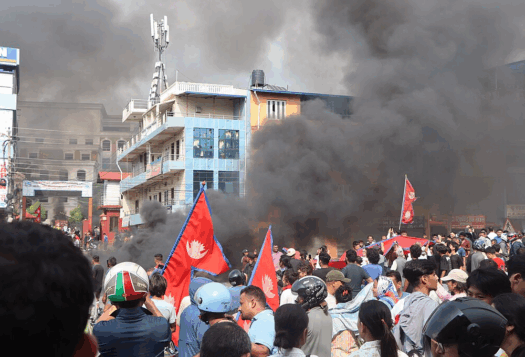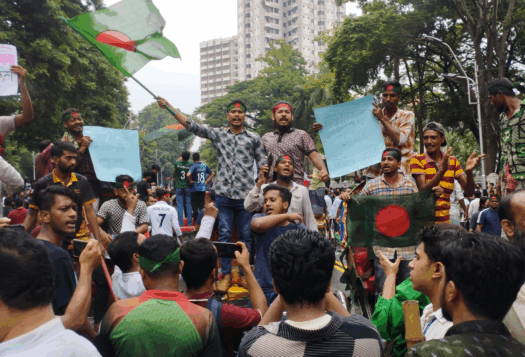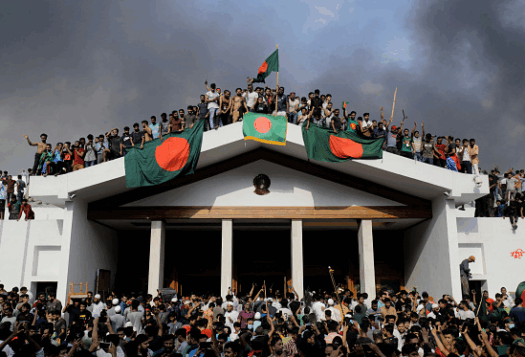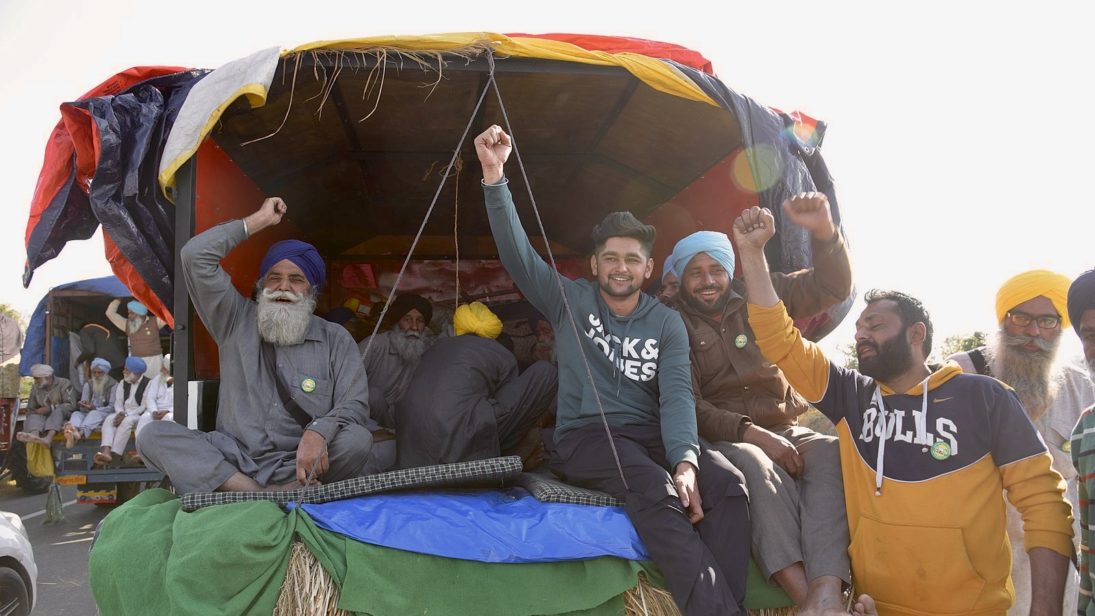
On November 19, Indian Prime Minister Narendra Modi announced his government’s decision to repeal three controversial farm laws passed last year, yielding to the central demand of thousands of farmers who have been protesting on the borders of New Delhi since November 2020. Concerned with the impact of the corporatization of agriculture that the laws proposed, farmers took to the streets and headed towards New Delhi, while the government refused to budge. With key state elections in sight, this rare withdrawal of a major policy commitment highlights the limits of brute majority governance in Indian politics.
The repeal is a rare retreat for a government reputed for undertaking drastic policy measures while withstanding concerted opposition. The combination of a challenging policy landscape in the near future with a sense of electoral vulnerability in upcoming state elections are driving this decision.
What were the farm laws and why were farmers protesting?
Taken together, the three laws opened avenues for deepening the role of the private investment in agriculture, a sector in which regulatory policy had historically restricted the operations and growth of large corporations. Uncertain about their economic outcomes in the absence of robust legal guarantees and safety mechanisms and upset over the perceived lack of political will to address their concerns, farmers around the country took to the street and those close to the capital headed to New Delhi to have their voices heard.
The first law allowed farmers to trade their produce outside of the physical markets notified under various state Agricultural Produce Marketing Committee laws (APMC acts). The second established a legal framework for contractual farming where farmers could enter contracts directly with buyers before sowing season to sell at pre-determined prices. The third law dispensed with the Central Government’s ability to impose stockholding limits on food items except under extraordinary circumstances. As per the government, these laws would thus open options for farmers other than monopolistic APMCs and eliminate the need for middlemen who would claim a large portion of revenues.
With key state elections in sight, this rare withdrawal of a major policy commitment highlights the limits of brute majority governance in Indian politics.
Farmers were alarmed by the lack of safety measures as the sector opened to corporations, particularly by the absence of a Minimum Selling Price (MSP) provision. Farmers feared that corporatization of agriculture would lower demand for their produce in local markets—pushing down prices—and would expose them to exploitation without a minimum price guarantee in markets and in contractual agreements. The ubiquity of the concern among farmers around the country, particularly in the heartland close to New Delhi in Punjab, western Uttar Pradesh, and Haryana, helped stitch alliances that transcended communal or religious divides. Unlike the widespread protests opposing the Citizenship (Amendment) Act in late-2019, early-2020, the farmer protests were not anti-Hindutva in nature.
This crisis was born out of the brash and uncompromising way the reforms were pushed through. Introduced through an ordinance during a pandemic, with little consultation and no widespread consensus, and passed through brute majority ignoring vigorous opposition inside and outside Parliament, the passage of the laws did little to address the insecurities regarding a perceived pro-corporate tilt. Early protests were faced with heavy police clampdowns. The government engaged in 11 rounds of talks with union leaders, while members of the ruling party continued portraying the farmers as the illegitimate other—as Khalistanis, anti-nationals, large land-owning elites seeking to keep rents, paid non-farmers, or as Modi referred to them, “aandolanjeevi” (ones who protest for a livelihood). The manner led to an extreme level of mistrust regarding the government’s intentions with the laws. Meanwhile, the government stared down at the protests for a year hoping the farmer movement would blink first.
A (nearly) unprecedented U-turn
After a year of staunchly standing by the three laws which they insisted would benefit farmers at large, the government’s decision to retreat is significant not merely because of its implications for the agricultural sector, but because it is rare for this Modi government to budge to any sort of public pressure. This government has carefully crafted a narrative of invincibility where it can undertake drastic reforms withstanding concerted opposition, reforms they claim should have been handled by earlier regimes. Having promised vikaas (progress) in 2014, this is a government that gets things done.
This narrative of resolute strength has entailed a governance model of no apologies, no withdrawals and open confrontation where acknowledging mistakes would itself be a mistake. It stuck with demonetization even when it became clear that the economy was not prepared for the shock. It did not give in to international protests following the abrogation of Article 370 and the revocation of the special status of Jammu and Kashmir. It refused to compromise on the Citizenship (Amendment) Act or the National Register of Citizens in response to nation-wide demonstrations that continued until the coronavirus-induced lockdown. Similarly, it did not ease lockdown restrictions even as an enormous humanitarian crisis ensued. It has also avoided issuing apologies under public scrutiny for questionable comments made by its ministers or senior party members, for instance when Member of Parliament Pragya Thakur repeatedly celebrated Gandhi’s assassin.
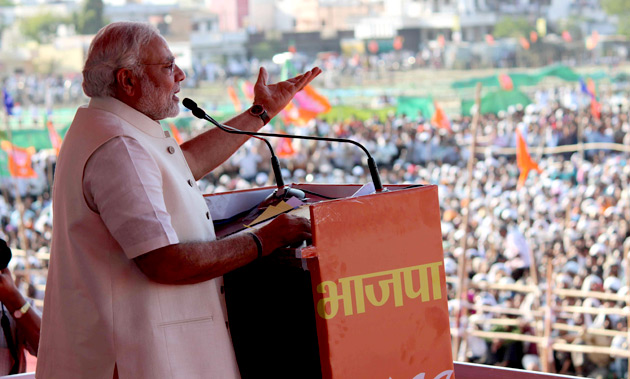
The only other instance of the Modi government committing a major policy U-turn was in 2015 when it withdrew a contentious ordinance which intended to overhaul India’s land acquisition law. However, it was much weaker in the Rajya Sabha at the time and could not pass laws by brute majority. And just one year into its tenure, it came under strong criticism as a “suit-boot ki sarkar” (government of the corporates). But in this case, the laws had already been passed. This raises the question of what about the opposition to these farm laws compelled the government to retreat.
A critical moment for the BJP
As we head into 2022, the government in New Delhi faces a large set of daunting issues at hand that are not easily resolvable. These include a recovering economy, internal and external security threats, and a potential public health crisis as a third coronavirus wave is not out of the question with only a third of the population fully vaccinated. Additionally, wide-spread protests against the farm laws are diverting attention and adding to the vulnerabilities of the government in a country where the farmer is a revered patriot (for instance “jai jawan, jai kisan” or “hail the soldier, hail the farmer” is a wartime slogan integrated in popular culture). The government and the BJP is especially concerned about losing control over the narrative.
Under this context, deepening mistrust and alienation in Punjab, a mighty agricultural state from where a large portion of the protesting farmers hail, is the last thing the government seeks. The prolonged protests were re-igniting questions of identity and agency in a state that witnessed the chaotic separatist Khalistan movement in the 1980s that has now for the most part completely died out. Given the multitude of issues at hand, agitation against the farm laws was the one issue where the government held the cards and could pursue at least a short-term resolution through compromise. The choice of Guru Nanak Jayanti to repeal the laws, a day celebrating the birth of the first Sikh guru, points to an attempt to outreach to those in Punjab, a state where the majority religion is Sikhism. However, these problems have persisted for some time now; why repeal them now?
Fears of an electoral pushback
This is a tactic of damage limitation. The BJP government is attempting to repair its reputation ahead of elections in early 2022 in the key states of Punjab and Uttar Pradesh as well five other states through the year. The BJP-led National Democratic Alliance (NDA) coalition is in power in six of those states, which is a disadvantage in a country characterized by anti-incumbency sentiments. The states headed into elections, Uttar Pradesh (UP), Punjab, Himachal Pradesh, and Uttarakhand are heavily invested in agriculture. These are all states geographically close to New Delhi, with many protesting farmers hailing from these states. The continued salience of the protests provided constant fodder at the local level for opposition campaigning by keeping the narrative on farm laws as the most pressing contemporary issue in rural areas. Furthermore, the prominence of the Lakhimpur Kheri incident in which four farmers were run over by a car allegedly driven by the son of a Union Minister further risked the development of linkages between the farmers movement and electoral outcomes in important state elections.
In spite of the Indian state’s seeming immunity against social movements over the last seven years, the agitations against the farm laws reveal that there is still scope for social movements in the world’s largest democracy.
The electoral loss in the state of West Bengal earlier this year has given the BJP more reason to worry. The Modi government has relied heavily in recent years on the government’s increasing presence in rural life through schemes such as PMKISAN and Ujjwala Yojana among others to maintain political power. However, the three farm laws amounted to a withdrawal of the state from a key rural sector. The BJP’s worries have been reaffirmed by disappointing outcomes in civic polls in Punjab and a by-election in Haryana, another agriculture-heavy state earlier this year. The swiftness of the Modi government to slash excise duties on petrol and diesel, whose prices had reached record-highs, after heavily disappointing electoral results in November shows that the government feels somewhat vulnerable about its electoral prospects. The repeal should also be understood under that context.
Conclusion
The status quo is not to be celebrated; it results in suboptimal outcomes for the farmer who receives a small fraction of the retail value of their produce, the consumer who pays artificially high prices for groceries, and the rural economy that struggles to take off. The agriculture sector desperately needs to be reformed. The three laws did that but largely favored the entry of the private sector. They were pursued with little regard to public consultation and instead engendered deep mistrust of the government’s intentions that was heightened by its heavy-handed response to protesting farmers. Faced with the choice between a suboptimal system that they have endured for decades and one introduced by an untrustworthy agent in New Delhi that they believed risked exposing them to new forms of exploitation, the farmers chose to stick with the devil they know. The repeal creates the possibility of renegotiating the arrangement and tackling the challenges of agricultural reform, but the experience may also deter governments from undertaking the task.
An unintended but consequential outcome of the repeal is that it will embolden farmers and social movements more broadly in India. While Modi appealed to the protesting farmers to return home, it is now their turn to not budge. They insist they will remain in place until the law is formally struck down in Parliament and Union leaders are also expected to pen a letter with six demands for the government, of which one would be price guarantees. The repeal highlights the importance of consensus-building in governing a large country and the limitations of brute majority. In spite of the Indian state’s seeming immunity against social movements over the last seven years, the agitations against the farm laws reveal that there is still scope for social movements in the world’s largest democracy.
***
Image 1: Randeep Maddoke via Wikimedia Commons
Image 2: Narendra Modi via Flickr
